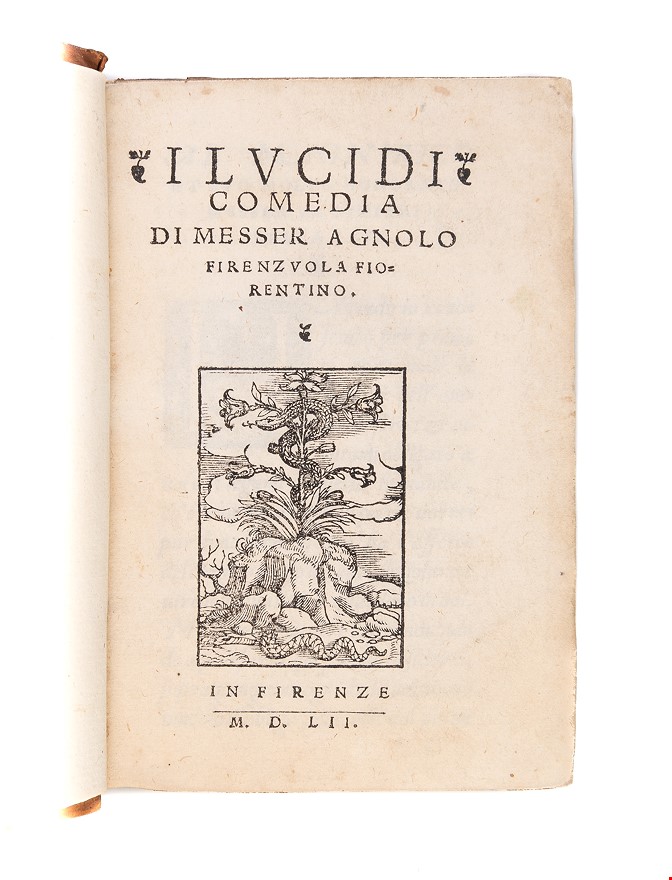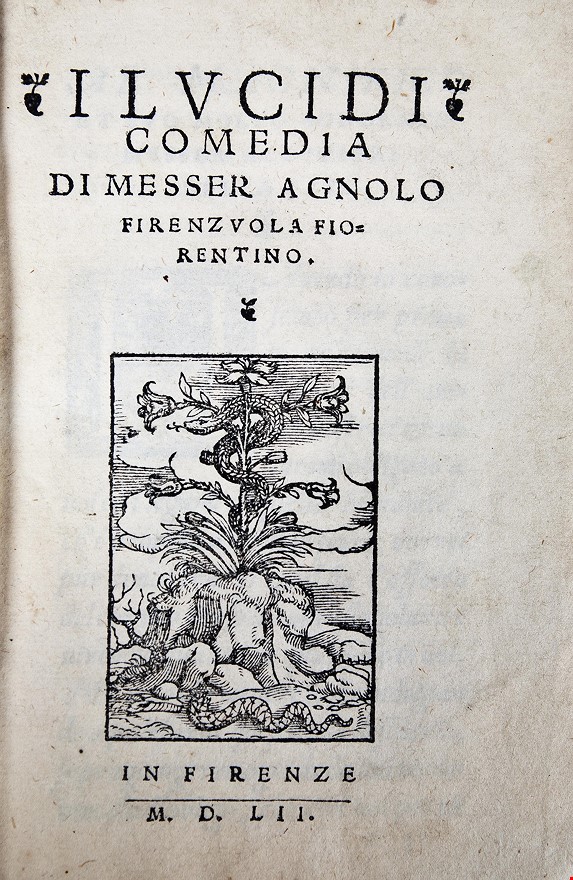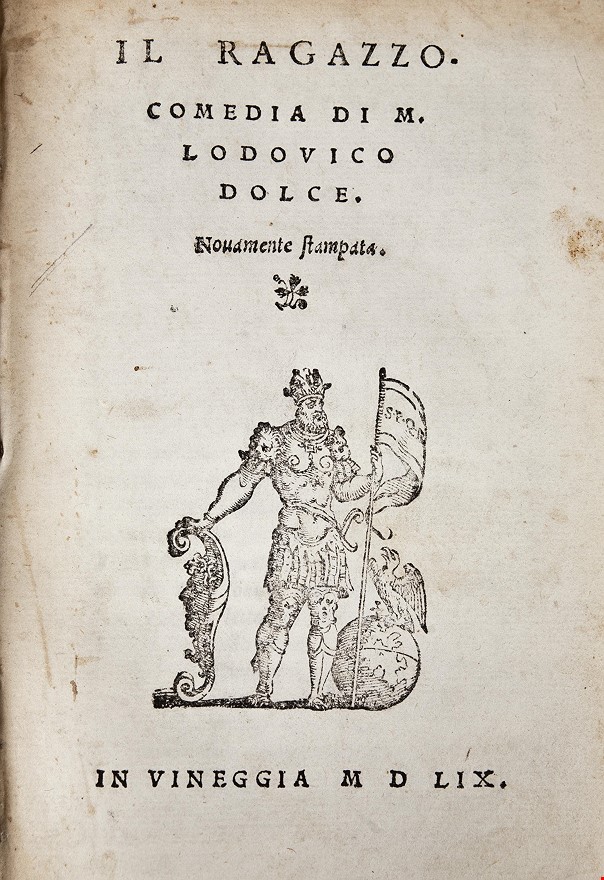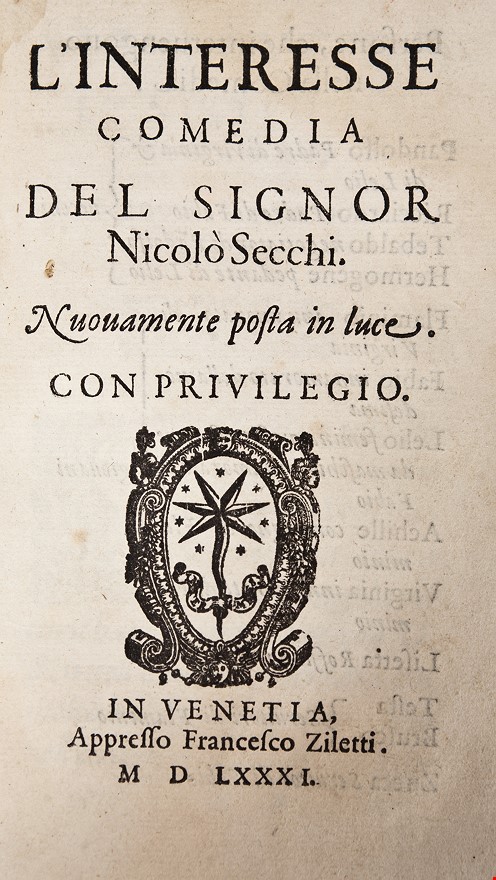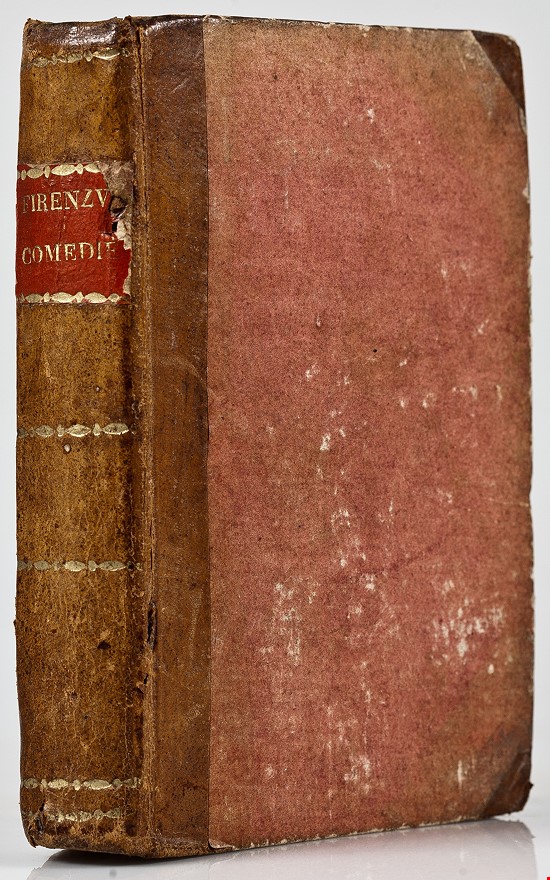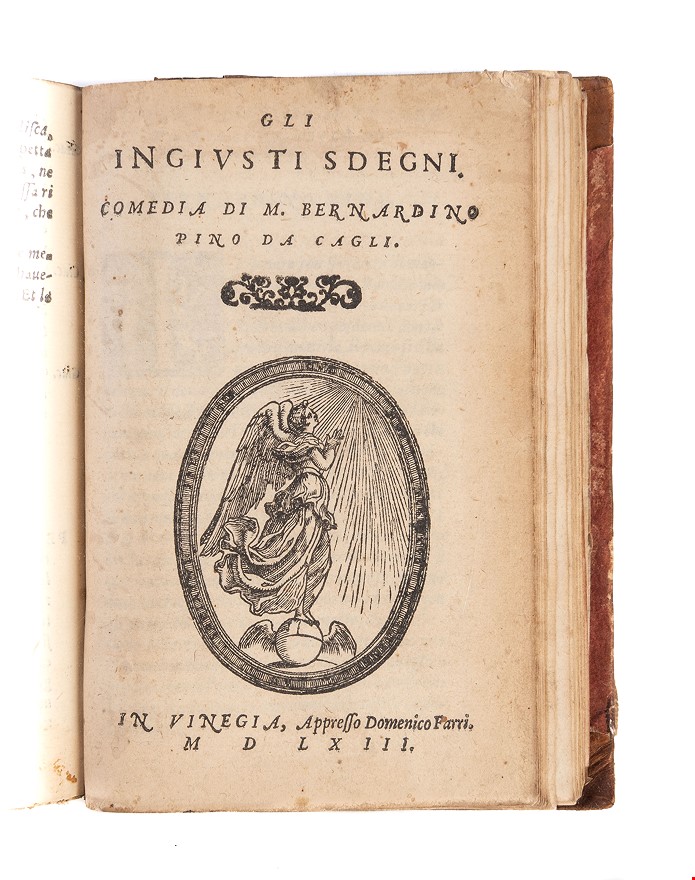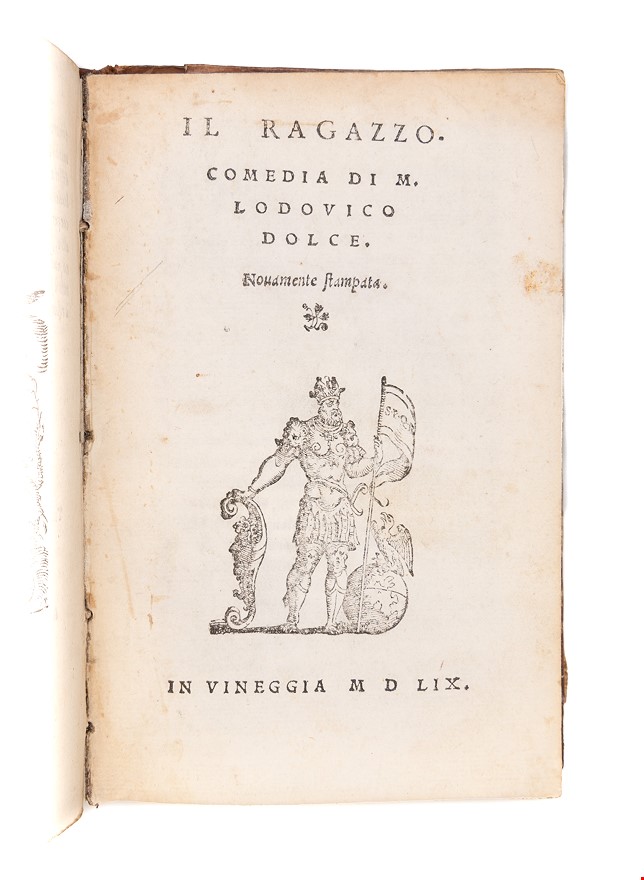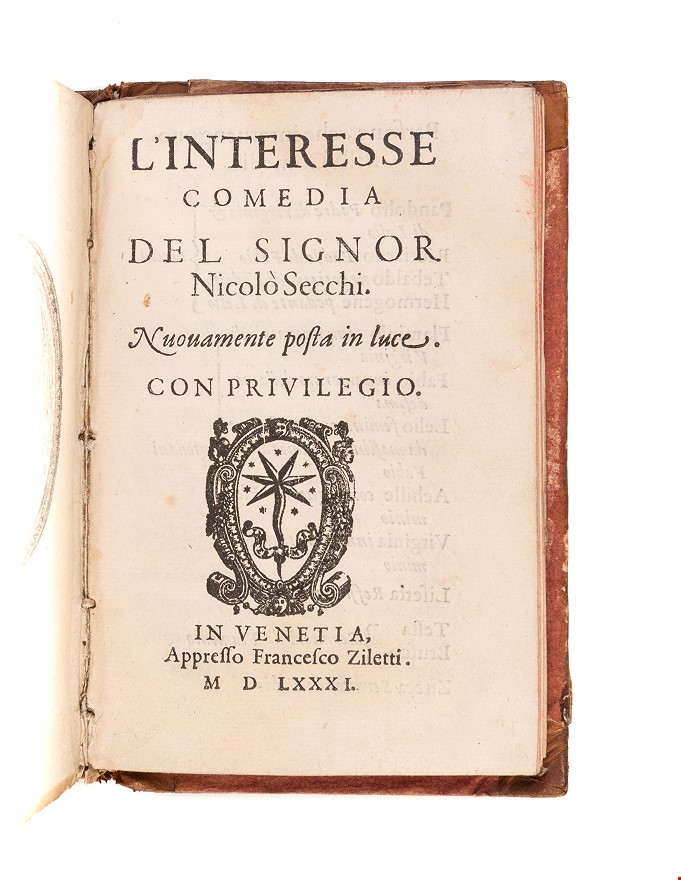FIRENZUOLA (Agnolo). I lucidi. Florence, 1552. [Bound with]:DOLCE (Lodovico). Il ragazzo. Venice, Francesco detto lo Imperador, 1559. [And]: PINO DA CAGLI (Bernardino). Gli ingiusti sdgeni. Venice, Domenico Farri, 1563. [And]: SECCHI (Nicolo). L'interesse comedia . . . nuovamente posta in luce. Venice, Francesco Ziletti,
ITALIAN THEATRE (1581.)
£1750.00
Please contact us in advance if you would like to view this book at our Curzon Street shop.
Printer's device on each title-page, and at end of the works by Firenzuola and Pino da Cagli.4 works in one volume. Sm. 8vo (146 x 95 mm). 18th century calf backed pink boards, morocco label.
Attractive collection of four notable Italian renaissance plays which includes the first edition of L'interesse by Nicolo Secchi, a comedy which is regarded as one of the sources of Shakespeare's Twelfth Night as well as being the inspiration for Molière's comedy Le depit amoureux. Helen Andrews Kaufmann, in an article in Shakespeare Quarterly (1954), pointed out several similarities between Twelfth Night and three Italian renaissance plays, L'Interesse, Secchi's Gl'Inganni and the anonymous Gl'Ingannati. All of them use the device of a girl disguised as a boy and in love with a man who already loves another woman, but it is only in Twelfth Night and L'Interesse that there is a duel arranged, and in both cases neither comes off. Kaufmann argues that "the similarities are great enough to make one wonder if the Viola-Aguecheek incident may not have grown out of the episode in L'Interesse." Other resemblances are the complex situation of an unknown lady supposedly in love with the leading male character, and of an unnamed maiden whom the girl in masculine disguise pretends to love; this is found in Twelfth Night, Gl'Inganni and in L'Interesse, but since L'Interesse predates the other two plays it may well be the ultimate source of the imaginary ladies invented by Ruberto in Gl'Inganni and by Viola in Twelfth Night. I. Second edition. Adams F496. Gamba 458. Censimento CNCE 19203. II. Third edition. Gamba 1358. Censimento CNCE 17355III. This was the play in which appeared for the first time the character Petruchio, who is later found in Shakespeare's Taming of the Shrew. Censimento CNCE 17355. IV. First edition. Adams S385. Censimento CNCE 40410. Ref: Shakespeare Quarterly, vol. V, 1954, pp. 271-280.
Stock Code: 46021
